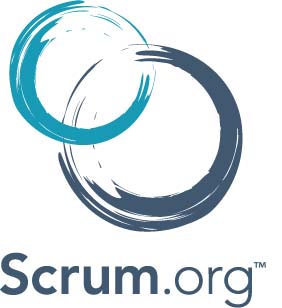SPONSOR AD  If your company is looking to create new business models through digital transformation, this practical eBook will help get you started. Michael Coté explores the strategies and tactics you need to transform your in-house software creation capabilities. Download now. |
| |
 In this podcast, Johnny Boursiquot, Site Reliability Engineer at Heroku, sat down with InfoQ podcast co-host Daniel Bryant and discussed topics that included: why Go is a useful language for building Function-as-a-Service (FaaS) style applications; how Heroku implements the role of Site Reliability Engineer (SRE); and why the ability to teach is such a valuable skill. (Podcast with transcript included) |
 In this podcast recorded at Agile 2019, Shane Hastie, Lead Editor for Culture & Methods, spoke to Scott Ambler of Disciplined Agile about the DA toolkit and taking agile beyond software development. (Podcast) |
 Netflix’s Director of Engineering Karen Casella, Polychain’s Security Engineer Rob Witoff, and Google’s Senior Engineering Leader Katharina Probst are among the committee members. Find out what Lead Chair Wes Reisz has to say about what to expect from QCon San Francisco 2020. |
| |
| Uber open-sourced Neuropod, an abstraction layer for machine learning frameworks that allows researchers to build models in the framework of their choice while reducing the effort of integration, allowing the same production system to swap out models implemented in different frameworks. Neuropod currently supports several frameworks, including TensorFlow, PyTorch, Keras, and TorchScript. (News) |
SPONSOR AD  This practical guide introduces architecture for serving models in real time as part of input stream processing. Using Python, Beam, Flink, Spark, Kafka streams and Akka, you’ll learn different ways to build a model-scoring solution. Download now. |
| |
| |
TOP DevOps NEWS HEADLINES |
-
-
-
-
-
|
 Whether self-hosted or managed, this article is going to cover five reasons why a cloud IDE may be precisely what you or your company needs to boost productivity to the next level. (Article) |
 Danyel Fisher and Liz Fong Jones discuss how they brought the theory of SLOs to practice, and what they learned that they hadn’t expected in the process. (Presentation) |
| |
| |
TOP Development NEWS HEADLINES |
-
|
 Johannes Nicolai discusses what coding might look like for the next generation, what kind of programming jobs will continue to exist in five years and which tasks will be automated by robots. (Presentation) |
 Andy Davies covers how to use feature toggles effectively, some of the horror stories and how to avoid them, and how to deal with them if they do occur. (Presentation) |
| |
| |
TOP Java NEWS HEADLINES |
-
|
 The release of Java SE 15 in Sept 2020 will introduce "sealed classes" (JEP 360) as a preview feature. A sealed class is a class or interface which restricts which other classes or interfaces may extend it. Sealed classes, like enums, capture alternatives in domain models, allowing programmers and compilers to reason about exhaustiveness. (Article) |
 Oleg Zhurakousky discusses Spring Cloud Stream and Spring Cloud Function as de facto technologies for Spring-based, event-driven microservices, overviewing recent developments and features. (Presentation) |
SPONSOR AD  Kubernetes is an open-source platform for automating deployment, scaling and operations of application containers across clusters of hosts. Download this Kubernetes cheat sheet to learn how to install Minikube, run locally on Minikube, install Kubectl, and use the Kubectl CLI. Download now. |
| |
| |
| Simplified parameter null validation has been promoted to a C# 9 feature. This narrowly tailored feature reduces the amount of code needed to validate non-null parameters to a single character in the function signature. (News) |
| |
| |
TOP Web Development NEWS HEADLINES |
-
-
-
|
 The book *Learning Progressive Web Apps* presents a gentle but thorough introduction to PWAs through the implementation of three PWAs. The book focuses on web manifests and service workers. The reader needs only know HTML, JavaScript and CSS to follow through the examples. (Article) |
 Eoin Shanaghy covers the highs and lows of building Node.js apps with Serverless. The open source, JavaScript-based SLIC Starter project is presented, showing how it is used to quickly adopt best practices and get to a successful production deployment without pain. He also shows how TypeScript-based Infrastructure as Code is the way forward! (Presentation with transcript included)
Join us for our upcoming QCon,QCon San Francisco, Nov 16-20, 2020 |
 Kate Sills discusses how to minimize the risks of running third-party JavaScript. She goes over POLA, the Principle of Least Authority, and how object capabilities can help grant specific, limited resources to third-party code. She also covers the current efforts to enforce security boundaries in JavaScript: SES (Secure ECMAScript) and Realms. (Presentation with transcript included) |
SPONSOR AD  The benefits of Kubernetes deployments have not come without costs: spiraling monitoring expenses, humans as single-points-of-failure, service dependencies, and more. Attend this live webinar to learn how observability can help you understand and mitigate these costs. (Presented by Lightstep & moderated by InfoQ). Thursday June 25th, 2020 (10 AM – 11 AM PST). Register Now. |
| |
| |
TOP Architecture & Design NEWS HEADLINES |
-
-
|
 If the goal is to create software applications that emulate the behavior of domain experts, then the challenge is in capturing and implementing the business rules. This is more a factor of good knowledge management than it is raw coding ability. Following techniques from Domain-Driven Design can provide a structure for effectively validating and implementing business rules in a system. (Article) |
 Jens Schauder discusses how to design an object model the DDD way, why this might be a good idea, and how to build a persistence layer for it backed by Spring Data JDBC. (Presentation) |
 Bernd Ruecker talks about real-life experiences around typical architecture patterns and why people have to carefully think about boundaries and responsibilities of their components.Further, he discusses why balancing orchestration and choreography is essential to avoid chaos and idempotency, and long-running and event-driven services. (Presentation with transcript included) |
SPONSOR AD  Download this technical paper to see what’s new in GraalVM Enterprise 20.0, including new performance optimizations for individual languages, seamless interoperability for polyglot applications and new capabilities for building microservices on premise and in the cloud. Download now. |
| |
| |
TOP Culture & Methods NEWS HEADLINES |
-
|
 In these times of turmoil, information technology is a strategic asset to weather the difficult times ahead. Companies launch projects to build digital products and seize new opportunities, but even with strong pressure to release as fast as possible, beware of the pitfalls of an unsustainable MVP. Building an MVP that is scale-ready takes careful consideration and disciplined practices. (Article) |
 The book Leveraging Digital Transformation - Proven Leadership and Innovation Strategies to Engage and Grow Your Organization by M. Nadia Vincent is a guide for implementing digital transformations. It explores how to lead a digital transformation, how to engage people into the transformation, and what can be done to enable digitalization and innovation. (Article) |
 Michal Buczko proposes that the QA department must play a strong role in defining the ethics of an organization. (Presentation) |
 Jem Djelal discusses the difference between a safe space and a brave one, how to distinguish between them, the pros & cons, how to move from a safe to a brave space, and patterns to use. (Presentation) |
SPONSOR AD  Continue your professional learning with our free online learning paths. These learning paths are targeted by role including: Scrum Master, Product Owner, Development Team Member and Leadership. |
| |
SPONSORED CONTENT Latest White Papers  [ebook] A Pattern Language for Strategy [ebook] A Pattern Language for Strategy
 How Tencent uses Cloud-Native Event Streaming to Process Tens of Billions of Financial Transactions How Tencent uses Cloud-Native Event Streaming to Process Tens of Billions of Financial Transactions
|



















